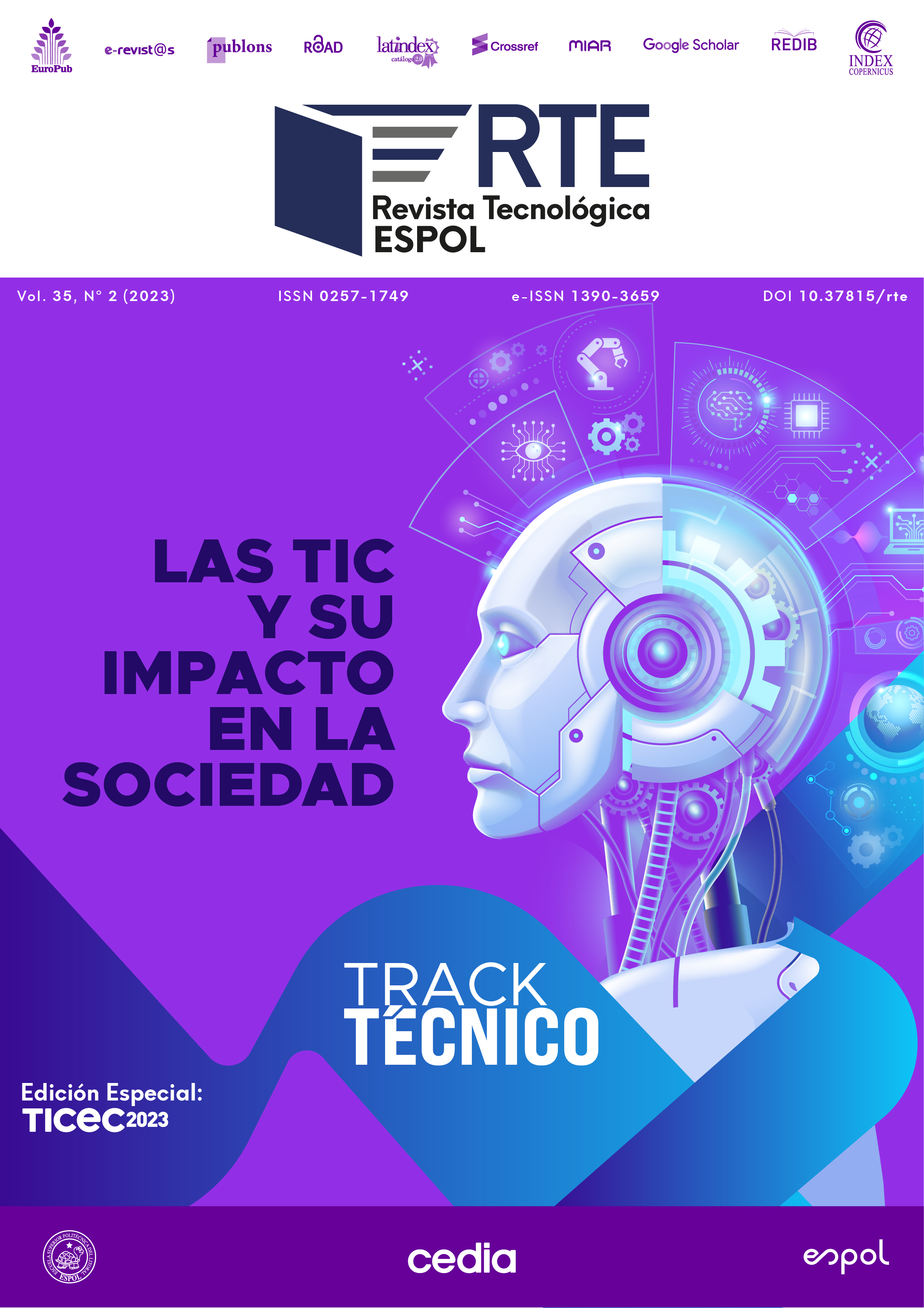Nowadays, cyberbullying has increased due to the growth and diversification of technologies. This has made early detection difficult in different sectors, such as academia. For this reason, this issue requires addressing through specific data analysis methods that allow its characterization to be identified. This study focuses on the detection of cyberbullying in students of a university in the city of Cuenca, Ecuador, applying data mining to analyze the information obtained from a psychological questionnaire on cyberbullying with sociodemographic aspects and through the scale of Likert to categorize the level of victimization and aggression among adolescents when using electronic devices. Using the grouping algorithm, the behavior patterns of the participants in the cyberbullying survey are evaluated and obtained, and the actors and academic sectors with the highest incidence are identified.

This work is licensed under a Creative Commons Attribution-NonCommercial 4.0 International License.
References
Botyarov, M., & Miller, E. E. (2022). Partitioning around medoids as a systematic approach to generative design solution space reduction. Results in Engineering, 15, 100544. https://doi.org/10.1016/j.rineng.2022.100544
Carballido, J. A., Latini, M. A., Ponzoni, I., & Cecchini, R. L. (2018). An Evolutionary Algorithm for Automatic Recommendation of Clustering Methods and its Parameters. Electronic Notes in Discrete Mathematics, 69, 229-236. https://doi.org/10.1016/j.endm.2018.07.030
Dedic, G., Djordjevic, B., & Dedic, S. (2019). Victimization in childhood as a suicide risk factor in adults. Vojnosanitetski pregled, 76(7), 667-674. https://doi.org/10.2298/VSP170826142D
Farag, N., El-Seoud, S. A., McKee, G., & Hassan, G. (2019). Bullying Hurts. Proceedings of the 2019 8th International Conference on Software and Information Engineering, 85-90. https://doi.org/10.1145/3328833.3328869
Garmendia Larrañaga, M., Jiménez Iglesias, E., & Larrañaga Aizpuru, N. (2019). Bullying and cyberbullying: victimisation, harassment, and harm. The need to intervene in the educational centre. Revista Española de Pedagogía, 77(273). https://doi.org/10.22550/REP77-2-2019-08
Görzig, A., & Frumkin, L. A. (2013). Cyberbullying experiences on-the-go: When social media can become distressing. Cyberpsychology: Journal of Psychosocial Research on Cyberspace, 7(1). https://doi.org/10.5817/CP2013-1-4
Hosseinmardi, H., Ghasemianlangroodi, A., Han, R., Lv, Q., & Mishra, S. (2014). Towards understanding cyberbullying behavior in a semi-anonymous social network. 2014 IEEE/ACM International Conference on Advances in Social Networks Analysis and Mining (ASONAM 2014), 244-252. https://doi.org/10.1109/ASONAM.2014.6921591
Johnson, P. (2022). What makes a cyber bully/victim?: factors associated with the perpetration of cyberbullying by cybervictims. Macquarie University.
Meaney, M., & Fikes, T. (2023). The Promise of MOOCs Revisited? Demographics of Learners Preparing for University. Journal of Learning Analytics, 10(1), 113-132. https://doi.org/10.18608/jla.2023.7807
Meliana, N., Sunardi, & Fadlil, A. (2019). Identification of Cyber Bullying by using Clustering Methods on Social Media Twitter. Journal of Physics: Conference Series, 1373(1), 012040. https://doi.org/10.1088/1742-6596/1373/1/012040
Moya-Solís, A., & Moreta-Herrera, R. (2022). Víctimas de cyberbullying y su influencia en las Dificultades de Regulación Emocional en adolescentes del Ecuador. Psychology, Society & Education, 14(1), 67-75. https://doi.org/10.21071/psye.v14i1.14066
Pamuji, A., & Setiawan, H. S. (2022). Cyberbullying Prediction As Cyber Counseling Tools With Data Mining Classification. Bit (Fakultas Teknologi Informasi Universitas Budi Luhur), 19(1), 29. https://doi.org/10.36080/bit.v19i1.1789
Parime, S., & Suri, V. (2014). Cyberbullying detection and prevention: Data mining and psychological perspective. 2014 International Conference on Circuits, Power and Computing Technologies [ICCPCT-2014], 1541-1547. https://doi.org/10.1109/ICCPCT.2014.7054943
Schubert, E., & Rousseeuw, P. J. (2021). Fast and eager k-medoids clustering: O(k) runtime improvement of the PAM, CLARA, and CLARANS algorithms. Information Systems, 101, 101804. https://doi.org/10.1016/j.is.2021.101804
Sitnik-Warchulska, K., Wajda, Z., Wojciechowski, B., & Izydorczyk, B. (2021). The Risk of Bullying and Probability of Help-Seeking Behaviors in School Children: A Bayesian Network Analysis. Frontiers in Psychiatry, 12. https://doi.org/10.3389/fpsyt.2021.640927
Sultan, D., Suliman, A., Toktarova, A., Omarov, B., Mamikov, S., & Beissenova, G. (2021). Cyberbullying Detection and Prevention: Data Mining in Social Media. 2021 11th International Conference on Cloud Computing, Data Science & Engineering (Confluence), 338-342. https://doi.org/10.1109/Confluence51648.2021.9377077
Useche, S. A., Valle, E., Valle-Escolano, R., & Colomer-Pérez, N. (2021). Psychometric properties, validity and insights of the School Bullying Questionnaire (CIE-A) in secondary schools of the Valencian Community (Spain). PLOS ONE, 16(11), e0259392. https://doi.org/10.1371/journal.pone.0259392
Zhang, S. (2021). From Flaming to Incited Crime: Recognising Cyberbullying on Chinese WeChat Account. International Journal for the Semiotics of Law - Revue internationale de Sémiotique juridique, 34(4), 1093-1116. https://doi.org/10.1007/s11196-020-09790-x







